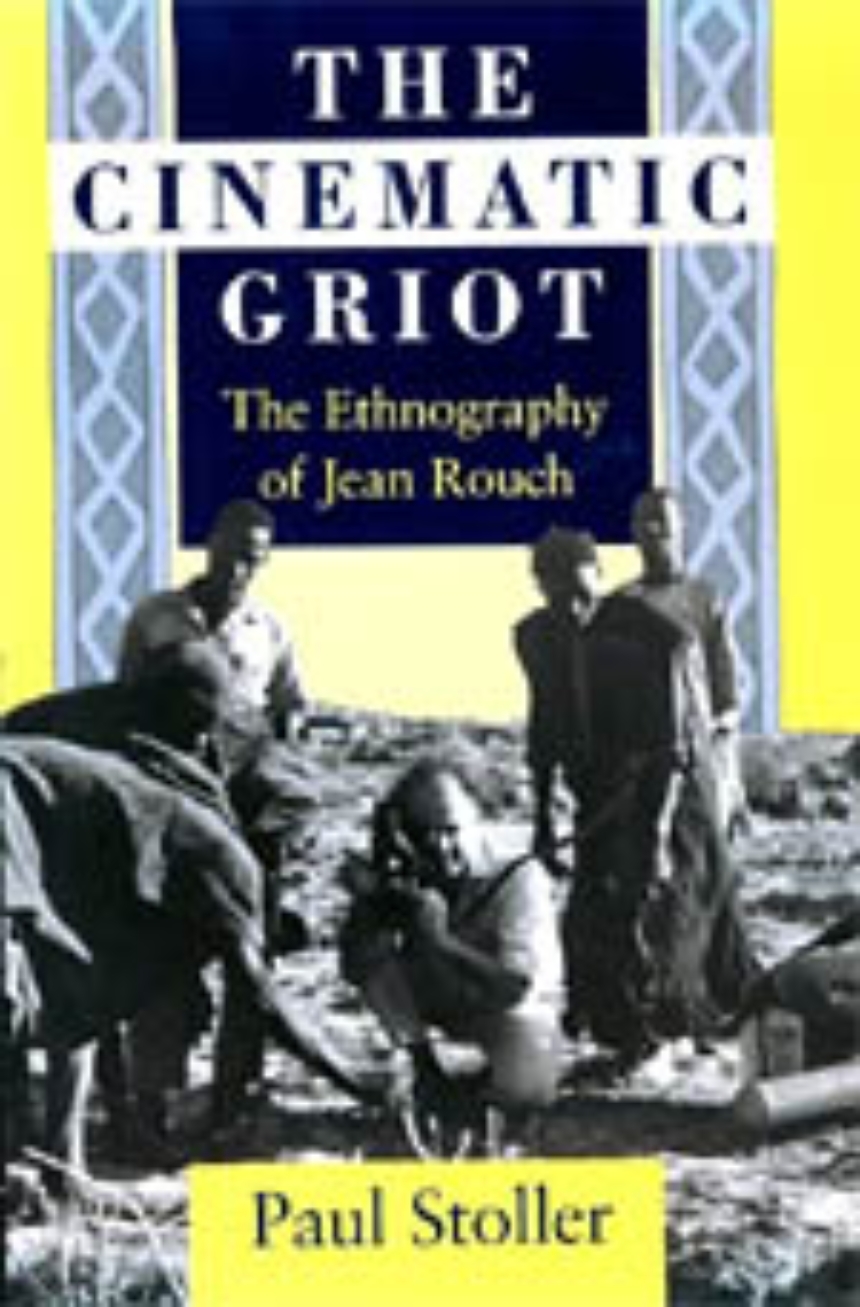The Cinematic Griot
The Ethnography of Jean Rouch
The most prolific ethnographic filmmaker in the world, a pioneer of cinéma vérité and one of the earliest ethnographers of African societies, Jean Rouch (1917-) remains a controversial and often misunderstood figure in histories of anthropology and film. By examining Rouch’s neglected ethnographic writings, Paul Stoller seeks to clarify the filmmaker’s true place in anthropology.
A brief account of Rouch’s background, revealing the ethnographic foundations and intellectual assumptions underlying his fieldwork among the Songhay of Niger in the 1940s and 1950s, sets the stage for his emergence as a cinematic griot, a peripatetic bard who "recites" the story of a people through provocative imagery. Against this backdrop, Stoller considers Rouch’s writings on Songhay history, myth, magic and possession, migration, and social change. By analyzing in depth some of Rouch’s most important films and assessing Rouch’s ethnography in terms of his own expertise in Songhay culture, Stoller demonstrates the inner connection between these two modes of representation.
Stoller, who has done more fieldwork among the Songhay than anyone other than Rouch himself, here gives the first full account of Rouch the griot, whose own story scintillates with important implications for anthropology, ethnography, African studies, and film.
A brief account of Rouch’s background, revealing the ethnographic foundations and intellectual assumptions underlying his fieldwork among the Songhay of Niger in the 1940s and 1950s, sets the stage for his emergence as a cinematic griot, a peripatetic bard who "recites" the story of a people through provocative imagery. Against this backdrop, Stoller considers Rouch’s writings on Songhay history, myth, magic and possession, migration, and social change. By analyzing in depth some of Rouch’s most important films and assessing Rouch’s ethnography in terms of his own expertise in Songhay culture, Stoller demonstrates the inner connection between these two modes of representation.
Stoller, who has done more fieldwork among the Songhay than anyone other than Rouch himself, here gives the first full account of Rouch the griot, whose own story scintillates with important implications for anthropology, ethnography, African studies, and film.
266 pages | 23 halftones, 5 maps, frontispiece | 6 x 9 | © 1992
Anthropology: Cultural and Social Anthropology
Table of Contents
Acknowledgments
Preface
1. In the Past, in the Present
Part I. Ethnographic Foundations
Introduction: Son of Griaule
2. Rouch’s Life in the Field
3. Worlds of the Ancestors
4. Migrations to New Worlds
5. People of Force, Spirits of Power
Part II. Cinema Rouch
Introduction: Two Spiritual Fathers and a Critical Son
6. Les Magiciens de Wanzerbe
7. The Lion Hunters
8. Jaguar
9. Les Maîtres Fous
10. Les Tambours d’Avant: Turu et Bitti
11. The Dogon Passion
Part III. When Films Become Dreams
Introduction: Postpositions
12. Rouch, Theory, and Ethnographic Film
Postface: The Work of the Griot
Bibliography of Jean Rouch
Filmography of Jean Rouch
References
Index
Preface
1. In the Past, in the Present
Part I. Ethnographic Foundations
Introduction: Son of Griaule
2. Rouch’s Life in the Field
3. Worlds of the Ancestors
4. Migrations to New Worlds
5. People of Force, Spirits of Power
Part II. Cinema Rouch
Introduction: Two Spiritual Fathers and a Critical Son
6. Les Magiciens de Wanzerbe
7. The Lion Hunters
8. Jaguar
9. Les Maîtres Fous
10. Les Tambours d’Avant: Turu et Bitti
11. The Dogon Passion
Part III. When Films Become Dreams
Introduction: Postpositions
12. Rouch, Theory, and Ethnographic Film
Postface: The Work of the Griot
Bibliography of Jean Rouch
Filmography of Jean Rouch
References
Index
